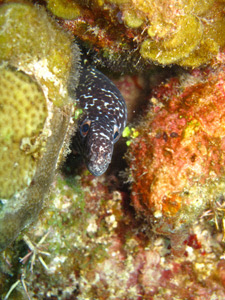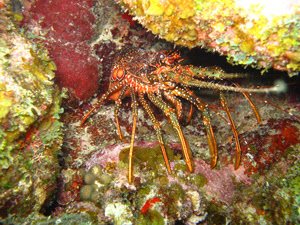Helpful Tips
Why you should try to buy soft goods where you can try them on and why don’t we sell them online?
If you’re replacing an old item and you know the size fits perfectly, contact us and we’ll be happy to replace it for you. However, The Scuba Diver Store feels strongly about the importance of properly fitting dive gear like boots, wetsuits, gloves and hoods. Our dive equipment experts understand no two brands fit exactly the same, even when they are the same size. Like clothing, you really need to try things on before buying. We all know how frustrating it is to buy something online and have to send it back for a different size or brand. Rather than taking chances on what you think would be the best size, it is better to try the item on first. If you’re in the area, come check out our Milwaukee store to try the dive gear on for yourself or patronize your local dive shop for the perfect fit; if they are over priced then email us with the story including brand, model and size and we’ll get it for you at a lower price for sure.
Why do we sell only BCD’s with 2 tank straps?
We’ve used quite a few BC’s over the years, both personally and for training AND FOUND unequivocally that 2 tank straps are FAR BETTER than only 1. Reason is simple; the redundancy of 2 straps keeps the tank secure and if there is only one to rely on, it comes loose, you lose; sometimes quite literally. We’ve seen far too many tanks fall out of straps while diving. WE WILL ONLY SELL BCD’s THAT HAVE 2 TANK STRAPS.
Why do we sell only air integrated computers?
Safety is one of the biggest concerns when Scuba Diving and it is not as safe to use a Puck Computer that does not give you air readings. WE ONLY SELL AIR INTEGRATED COMPUTERS SIMPLY BECAUSE THEY ARE FAR BETTER THAN THE ALTERNATIVE. You simply NEED to know your tissue gas saturation when doing multiple dives and only air integrated computers give you that. They are SLIGHTLY more costly, BUT FAR WORTH THE EXTRA PRICE.
Why do we sell only Environmentally Sealed Regulators?
Sealed First Stages are 100% the way to go. Unsealed First Stages let in freezing water, salt and dirt. If you have ever serviced the a First Stage, you would have seen all the rust, corrosion and dirt inside. Safety is one of the biggest concerns when Scuba Diving and any of these internal issues can make the internal parts fail in some way. WE ONLY SELL Environmentally Sealed Regulators SIMPLY BECAUSE THEY ARE FAR BETTER than unsealed. Zero issues when your service technician sees the internal parts. They are SLIGHTLY higher cost, BUT FAR WORTH THE EXTRA PRICE.
Underwater headphone placement for metal detectors:
On 2-18-2019 Christopher from NJ asked in regard to his recently purchased JW Fishers Pulse 8X:
“I was wondering how most people secure the underwater headphone. I can’t seem to find any easy way to secure it in position over my ear”
We responded with: “Thanks for asking, most people feel the headphone is so loud that they don’t try to have it anywhere near their ear, but instead have it on a pouch on their upper BC strap OR WHAT I THINK IS BETTER, have a hood on, put it down the suit neck and up the hood AND HAVE IT PLACED on the back of their neck. That back of the neck void or natural pocket seems to work great and it is still easily heard.
10 Tips for Underwater Photographers
-
 Photograph with Care
Photograph with Care
Dive carefully as many aquatic creatures are fragile regardless of size. Improper techniques while taking or editing photos underwater can damage sensitive aquatic life and harm fragile organisms with the bump of a camera or tank, swipe fin or even the touch of a hand.- Dive Neutral
Camera systems may add weight or be buoyant. Make sure to secure photo and dive equipment and be properly weighted to avoid contact with reefs or other vital habitat. Practice buoyancy control and photography skills in a pool before swimming near sensitive and fragile environments. - Resist Temptation
Avoid touching, handling, feeding, chasing or riding aquatic life. Avoid altering an organism’s location to get the perfect shot. Many aquatic creatures are shy and easily stressed. These actions may interrupt feeding, disturb mating or provoke aggression in a normally nonaggressive species. - Easy Does It
While diving, move slowly and deliberately through the water. Be patient and still while photographing – allow organisms to show their natural behavior for a more significant and meaningful shot. - Sharpen Your Skills
Make sure the difficulty of the dive and the environmental conditions are appropriate for your current skills and comfort level. Avoid stabilizing underwater by grabbing onto the reef for a better photo. Enroll in PADI’s Underwater Photographer, Digital Underwater Photography and Peak Performance Buoyancy Specialty courses to become a more skilled and successful photographer. - Be Informed
Be aware of local regulations and protocols regarding behavior around marine mammals and other species before entering the water. These regulations protect creatures and aim to assure their preservation for future generations. - Be an AWARE Diver
Consider enrolling in an AWARE – Coral Reef Conservation, Project AWARE Specialty or Underwater Naturalist course to learn sustainable dive techniques and increase knowledge about the environment you’re photographing. - Take Only Pictures, Leave Only Bubbles
Avoid souvenir collection. Nearly everything found in the aquatic realm is alive or will be used by a living creature. Removing specimens such as corals and shells can disturb the delicate balance and quickly deplete dive sites of both their resources and their beauty. - Share Your Images
Use images for conservation by reporting environmental disturbances or destruction using your photographs as evidence. Assist scientific research and improve resource management by contributing your photos to The Whale Shark Project and other monitoring programs. You may also submit your photos to Project AWARE. Your images have the power to change perspectives and influence conservation. - Conserve the Adventure
Join Project AWARE Foundation, the dive industry’s leading nonprofit environmental organization. Your support helps conserve underwater environments through education, advocacy and action.
© Project AWARE Foundation 2007 – www.projectaware.org
 Ten Ways a Diver Can Protect the Underwater Environment
Ten Ways a Diver Can Protect the Underwater Environment- Dive carefully to protect fragile aquatic ecosystems
Many aquatic organisms are delicate and can be harmed by the bump of a camera, the swipe of a fin or even the gentle touch of a hand. Some aquatic organisms like corals grow very slowly and breaking even a small piece can destroy decades of growth. By being careful you can prevent longterm damage to magnificent dive sites. - Be aware of your body and equipment placement when diving
Keep your gauges and alternate air source secured so they don’t drag over the reef or other vital habitat. Control your buoyancy, taking care not to touch fragile organisms with your body or equipment. You can do your part and prevent injury to aquatic life every time you dive. - Keep your dive skills sharp through continuing education
Before heading to open water seek bottom time with a certified professional in a pool or other environment that won’t be damaged. You can also refresh your skills and knowledge with a PADI Scuba Review, PADI Advanced Open Water Diver course or Project AWARE Specialty course such as Peak Performance Buoyancy. - Consider how your interactions affect aquatic life
Avoid touching, handling, feeding or riding on aquatic life. These actions may stress the animal, interrupt feeding and mating behavior or provoke aggressive behavior in normally nonaggressive species. - Understand and respect underwater life
Playing with animals or using them as food for other species can leave a trail of destruction, disrupt local ecosystems and rob other divers of their experiences with these creatures. Consider enrolling in a PADI Underwater Naturalist, AWARE Fish Identification or Coral Reef Conservation Specialty course to better understand sustainable interactions. - Be an ecotourist
Make informed decisions when selecting a destination and choose Project AWARE Environmental Operators or other facilities dedicated to sustainable business practices. Obey all local laws and regulations and understand your effect on the environment. Don’t collect souvenirs like corals or shells. Instead, take underwater photos and follow Project AWARE’s 10 Tips for Underwater Photographers. - Respect underwater cultural heritage
Divers are privileged to access dive sites that are part of our cultural heritage and maritime history. Wrecks can also serve as important habitats for fish and other aquatic life. Help preserve these sites for future generations by obeying local laws, diving responsibly and treating wrecks with respect. - Report environmental disturbances or destruction
As a diver, you’re in a unique position to monitor the health of local waters. If you notice unusual depletion of aquatic life, injury to aquatic animals or strange substances in the water, report these observations to responsible authorities in your area. - Be a role model for other divers and nondivers when interacting with the environment
As a diver, you see the underwater results of carelessness and neglect. Set a good example in your own interactions so that others can learn from you. - Get involved in local environmental activities and issues
You can greatly affect your corner of the planet. There are plenty of opportunities to support healthy aquatic environments including Project AWARE conservation and data collection activities like local beach and underwater cleanups and CoralWatch monitoring, supporting environmental legislative issues, attending public hearings on local water resources, conserving water or making responsible seafood choices.
© Project AWARE Foundation, Inc. 2007 – www.projectaware.org

